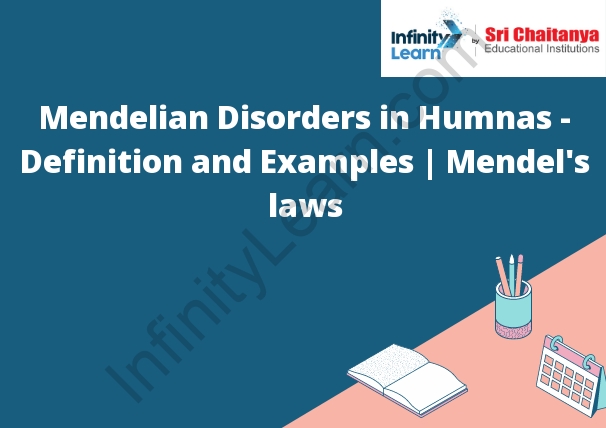Table of Contents
What are Mendelian Disorders?
A Mendelian disorder is an inherited disorder that is passed down through families in a predictable pattern. The disorder is caused by a mutation in a gene that is passed down from one generation to the next. Mendelian disorders are often rare and can be difficult to treat.

Principles of Mendelian Disorders
- Mendelian Disorders are caused by a defect in a single gene.
- They are passed down in families in a predictable pattern.
- Mendelian Disorders are usually diagnosed in childhood.
- They can be treated with medication or surgery.
- Mendelian Disorders can often be cured or managed with early diagnosis and treatment.
Mendel’s Law of Segregation
Mendel’s law of segregation states that when a diploid organism produces gametes, the alleles for a particular gene segregated into different gametes. This means that each gamete has only one allele for each gene.
Mendel’s Law of Independence
Mendel’s law of independence states that the inheritance of one trait not influenced by the inheritance of another trait.
Mendelian Disorders in Humans
Mendelian disorders conditions that caused by a change in a single gene. These disorders usually inherited in a pattern called Mendelian inheritance. Mendelian disorders can passed down from parents to children or they can occur randomly.
Some common Mendelian disorders in humans include cystic fibrosis, hemochromatosis, and Huntington’s disease. However cystic fibrosis is a disorder that affects the lungs and the digestive system. Hemochromatosis is a disorder that causes the body to absorb too much iron. Huntington’s disease is a disorder that causes the brain to degenerate.
Types of Mendelian Disorders
Mendelian disorders are a group of rare genetic disorders that caused by a change, or mutation, in a specific gene. These disorders passed down from parents to children in a dominant or recessive pattern.
- Dominant Mendelian disorders caused by a mutation in a single gene, and also the disorder always passed down from parents to children. If a child inherits the mutated gene, he or she will develop the disorder.
- Recessive Mendelian disorders caused by a mutation in a single gene, and the disorder only passed down from parents to children if both parents carry the mutated gene. If a child inherits the mutated gene from only one parent, he or she will not develop the disorder but will be a carrier.
Examples of Mendelian Disorders in Humans
Mendelian disorders genetic disorders that passed down from parents to their children through genes. Some common Mendelian disorders in humans include cystic fibrosis, Huntington’s disease, and also sickle cell anemia.
Cystic fibrosis is a genetic disorder that affects the lungs and the digestive system. It caused by a mutation in the CFTR gene. Therefore this gene codes for a protein that helps regulate the movement of salt and water in and out of cells. People with cystic fibrosis have a defective CFTR protein, which causes the production of thick and sticky mucus. This mucus can clog the lungs and the ducts that carry digestive juices from the stomach to the small intestine. This can lead to breathing problems and also digestion problems.
Huntington’s disease is a genetic disorder that affects the brain. It caused by a mutation in the huntingtin gene. Therefore this gene codes for a protein that helps regulate the movement of chemicals in and out of cells. People with Huntington’s disease have a defective huntingtin protein, which causes the cells in the brain to die. This can lead to problems with movement, thinking, and also emotions.
Sickle cell anemia is a genetic disorder that affects the red blood cells. It caused by a mutation in the hemoglobin gene. Therefore this gene codes for the protein that carries oxygen in the blood.
Cystic Fibrosis
Cystic Fibrosis is a genetic disorder that affects the lungs and digestive system. It caused by a defective gene that causes the body to produce abnormally thick and sticky mucus. This mucus can clog the lungs and also make it difficult to breathe. It can also block the passage of food from the stomach to the small intestine, leading to malnutrition.
There is no cure for cystic fibrosis, but treatment can help manage the symptoms. This includes medications to thin the mucus, chest physiotherapy to help clear the lungs, and also healthy diet to ensure adequate nutrition.
Thalassemia
Thalassemia is a blood disorder that can cause anemia.
Sickle Cell Anemia
The carrier frequency of sickle cell anemia in the United States is about 1 in 500. Sickle cell anemia is a hereditary blood disorder in which the red blood cells abnormally shaped.
Sickle cell anemia is most common in people of African descent, but it can occur in people of any race. If one parent has sickle cell anemia, each of their children has a 25% chance of inheriting the disorder. There is no cure for sickle cell anemia, but treatments are available to help relieve symptoms.
Haemophilia
Haemophilia is a rare, inherited disorder that affects the blood’s ability to clot. People with haemophilia lack one or more proteins that help the blood to clot. As a result, they may experience excessive bleeding from even a minor injury. Haemophilia can be mild, moderate, or severe, depending on the amount of clotting factor present in the blood. There is no cure for haemophilia, but treatments are available that can help to control bleeding.
Phenylketonuria (PKU)
Phenylketonuria is a genetic disorder that results in the body’s inability to break down the amino acid phenylalanine. Therefore this amino acid builds up in the blood and can cause intellectual disability, seizures, and other health problems. Treatment for phenylketonuria includes a special diet that limits the amount of phenylalanine in the diet.









